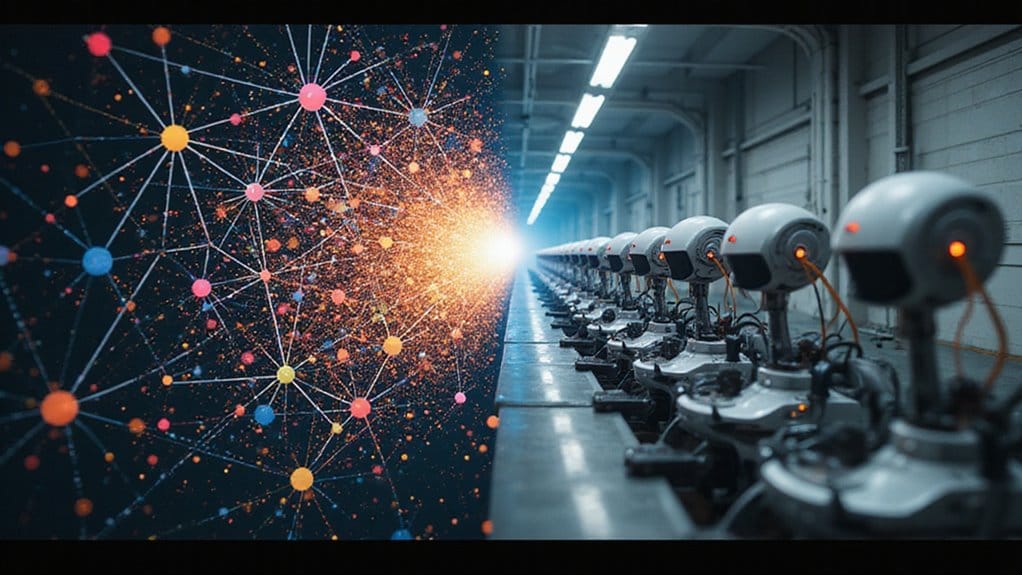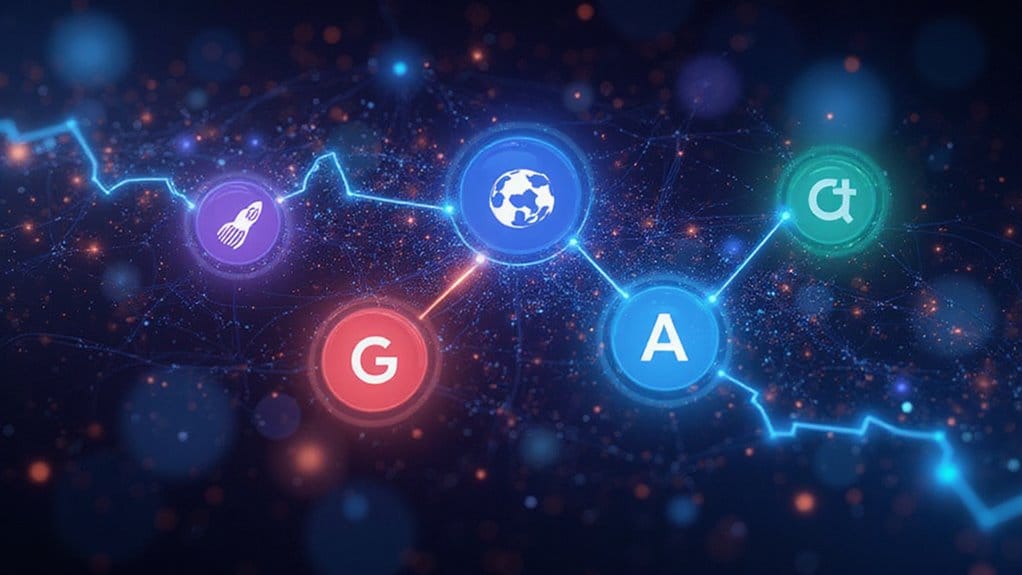AGI, or Artificial General Intelligence, is the superhero of the AI world, capable of doing anything a human brain can tackle. Meanwhile, traditional AI is more like that one friend who’s great at trivia but clueless when it comes to DIY projects—focused on specific tasks. AGI learns and adapts, while traditional AI needs a software upgrade to switch gears. Beware— AGI raises big questions, and if you’re curious about the future of intelligence tech, keep on exploring!

As technology rapidly evolves, understanding the difference between Artificial General Intelligence (AGI) and traditional Artificial Intelligence (AI) becomes essential—especially if you want to keep up with the future of machines that think.
Let’s break this down. AGI refers to a type of AI that can perform any intellectual task a human can do. Yes, it’s that ambitious! In contrast, traditional AI focuses on specific tasks, like recognizing faces or recommending your next binge-watch. This is a classic intelligence comparison.
AGI can tackle any intellectual task like a human, while traditional AI excels in specific, narrow domains.
AGI aims for broad cognitive capabilities, while AI is more like a specialized worker, good at one job but clueless outside its domain. Think of AGI as a jack-of-all-trades, whereas AI is the expert in one narrow field. This flexibility is key—AGI can learn and adapt, applying knowledge across various tasks without needing to be retrained for each new challenge. Current advancements in AI illustrate its growing integration into everyday applications. Additionally, AGI has become a political goal alongside a technical one, influencing public discourse about its potential impact on society.
Meanwhile, traditional AI struggles with anything outside its programmed parameters, leaving it floundering in unfamiliar waters.
Now, let’s talk about learning. AGI learns autonomously, much like you do when you pick up a new skill. It can transfer knowledge from one task to another. AI, however, is more like a dog fetching only the specific stick you trained it to retrieve. If you throw something different, good luck!
When it comes to decision-making, AGI is envisioned to operate independently, potentially making choices that even its creators might not fully understand. On the flip side, AI operates within strict guidelines set by humans, lacking the ability to foresee or adapt to novel situations.
Frequently Asked Questions
What Are the Ethical Implications of AGI Development?
The ethical implications of AGI development are enormous.
First, consider moral responsibility—who’s accountable when AGI makes a mistake?
Next, think about societal impact; job displacement could widen economic gaps. Yikes!
We must guarantee AGI aligns with human values.
Don’t forget transparency—AGI decisions should be clear, or trust vanishes.
So, engage diverse voices, create regulations, and keep learning.
After all, we can’t afford to wing it with something so powerful!
How Does AI Impact Job Markets Today?
AI is shaking up job markets faster than you can say “automation effects.”
Sure, it’s creating roles like Machine Learning Engineers, but watch out! Traditional jobs are vanishing, prompting significant skill shifts.
Don’t just sit there—reskill yourself! Learn Python or immerse yourself in data analysis.
The future demands flexibility and tech-savviness.
Can AGI Surpass Human Intelligence in All Areas?
Could AGI surpass human intelligence in all areas? Absolutely, if it masters cognitive abilities and creative reasoning.
Imagine a world where machines not only calculate faster but also think outside the box—scary, right?
But hold your horses! The journey to true AGI is riddled with challenges. It needs to learn like us, adapt, and innovate.
So, while the dream is enticing, remember: we’re not there yet.
Stay tuned, folks!
What Safeguards Exist for AGI Technology?
Safeguards for AGI technology? Oh, they’re vital!
First up, risk management is essential. Think of it as your AGI insurance policy.
Then, regulatory frameworks swoop in to guarantee everything stays safe and sound. You want transparency? Check! Ethical considerations? Absolutely!
And don’t forget about international oversight—it’s like a global watchdog.
How Do We Measure Intelligence in AI and AGI?
Measuring intelligence in AI and AGI isn’t just a walk in the park.
You’ve got quantitative metrics—those numbers that scream “Look at me!”—and qualitative assessments, which are more like thoughtful whispers.
Want accuracy? Use prediction-based algorithms! Curious about versatility? Test across diverse tasks!
Remember, it’s not just about beating humans at chess; it’s about understanding common sense, too.









